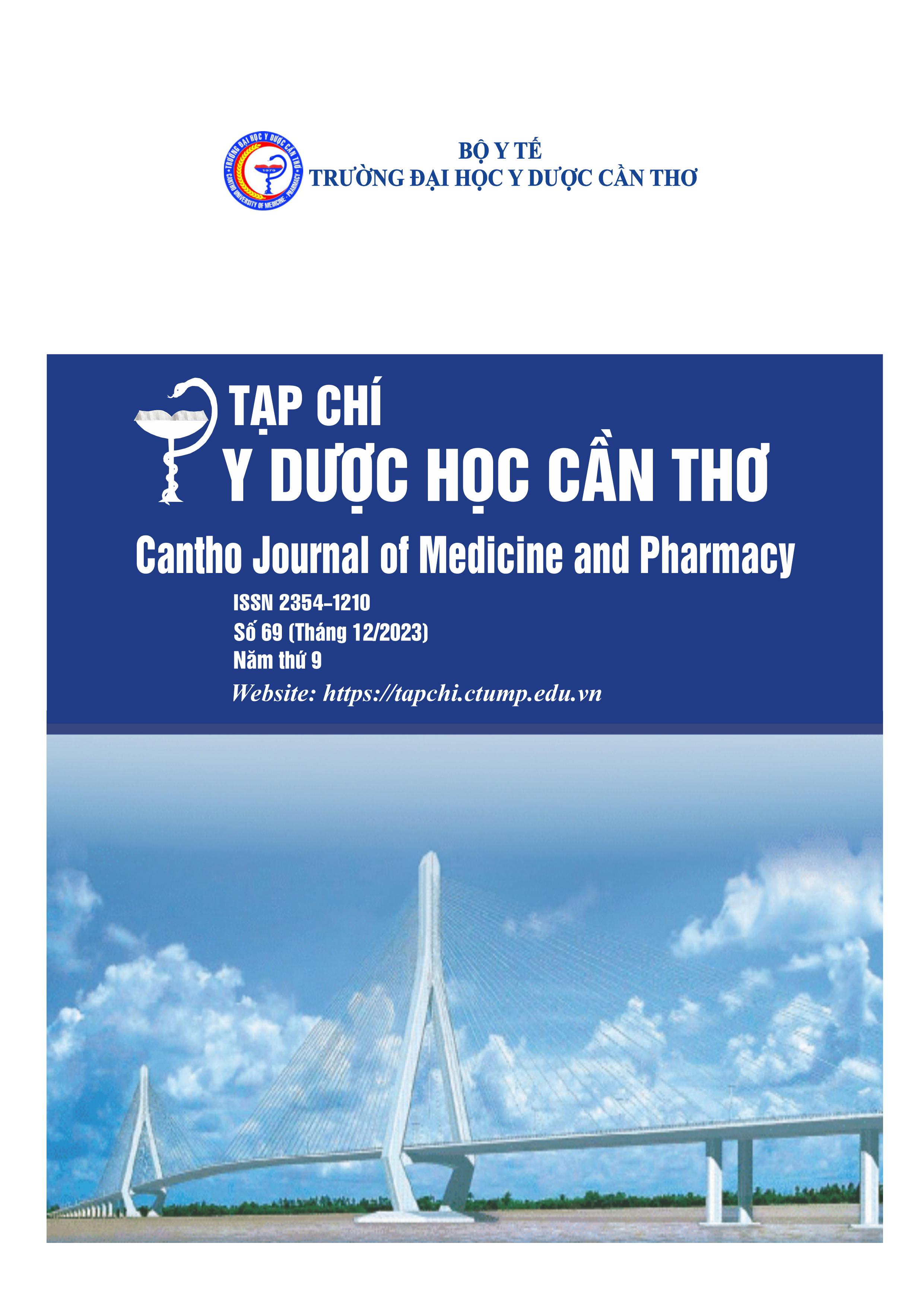BOTANICAL CHARACTERISTICS, DNA BARCODE AND PRELIMINARY PHYTOCHEMICAL SCREENING OF MELALEUCA ALTERNIFOLIA, MYRTACEAE
Main Article Content
Abstract
Background: Tea tree is grown in many places like Australia, Europe, North America, Southeast Asia. Leaf extracts have antibacterial effects, treat skin diseases, acne, insect bites, and cough. However, not many researches have been conducted on this species in Vietnam. This paper aims to add further information to identify this species accurately. Objectives: The aim of this modify structure is to investigate the botanical characteristics, DNA barcodes to contribute to correcting identification of Tea tree and preliminary phytochemical screening. Materials and Method: Fresh Tea tree collected in Lam Ha-Lam Dong were analysised, photographed and described in terms of morphological and anatomical characteristics, the leaves’ herbal powder. Analyzed gene trnH-psbA sequence and preliminary phytochemical screening was conducted in accordance with the modified Ciuley method. Results: Tea tree was identified as Melaleuca alternifolia (Maiden & Betche) Cheel. Based on morphological characteristics and gene trnH-psbA sequence, the featured morphological characteristics are as follows: Simple leaf, alternate, numerous stamens connate into 5 bundles opposite petals, 3 carpels, hypogynous. Anatomical data are as follows: Pericycle fibres, phloem fibres, internal phloem, calcium oxalate crystals on stems anatomy; xylem-phloem form are 1 bundle, calcium oxalate crystals on leaves anatomy. The leaves’ powder characteristic is fibers and calcium oxalate crystals. The chemical composition of the leaves includes: Essential oils, triterpenoide, flavonoids, saponins and tannins. Conclusion: This study confirms the scientific name of Tea tree in Vietnam as Melaleuca alternifolia (Maiden & Betche) Cheel, Myrtaceae, together with the anatomical characteristics of stems, leaves and the chemical composition of the leaves.
Article Details
Keywords
Melaleuca alternifolia, gen trnH-psbA, morphology, anatomy, phytochemical constituents
References
2. Shah G. and Baghel U.S.. Pharmacognostic standardization of the leaf of Melaleuca alternifolia (Maiden & Betche) Cheel. African Journal of Traditional, Complementary and Alternative Medicines. 2017. 14(3), 1-11, doi:10.21010/ajtcam.v14i3.
3. Noumi E., Mejdi S., Hajlaoui H., Najla Tr., Riadh K. et al. Chemical composition, antioxidant and antifungal potential of Melaleuca alternifolia (Tea Tree) and Eucalyptus globulus essential oils against oral Candida species. Journal of Medicinal Plants Research. 2011. 5(17), 4147-4156, doi: 10.3390/plants11040558.
4. Puvača N., Čabarkapa I., Petrović A., Bursic V., Prodanovic R. et al.. Tea tree (Melaleuca alternifolia) and its essential oil: antimicrobial, antioxidant and acaricidal effects in poultry production. World's Poultry Science Journal. 2019. 75(2), 235-246, doi:10.1017/S0043933919000229.
5. Sankara M., Sidde L., Konapalli R., Mahalakshmi S. and Sushima S.. A total survey on leaves of Melaleuca alternifolia (tea tree oil). World Journal of Current Medical and Pharmaceutical Research. 2020. 2(4), 271-279, doi:10.37022/wjcmpr.vi.152.
6. Brophy J.J., Craven L.A., Doran J.C.. Melaleucas: their botany, essential oils and uses. Australian Centre for International Agricultural Research. 2013. 74.
7. Joey S., Edgar B.L., John T.B., Susan B.F., Wusheng L. et al. The tortoise and the hare II: Relative utility of 21 noncoding chloroplast DNA sequences for phylogenetic analysis. American Journal of Botany. 2005. 92(1), 142–166, doi: 10.3732/ajb.92.1.142.


